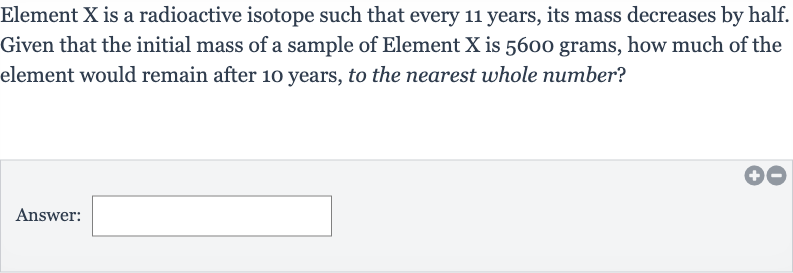AI tutor
Welcome to Bytelearn!
Let’s check out your problem:

Element is a radioactive isotope such that every years, its mass decreases by half. Given that the initial mass of a sample of Element is grams, how much of the element would remain after years, to the nearest whole number?Answer:
Full solution
Q. Element is a radioactive isotope such that every years, its mass decreases by half. Given that the initial mass of a sample of Element is grams, how much of the element would remain after years, to the nearest whole number?Answer:
- Understand the problem: Understand the problem.We need to calculate the remaining mass of a radioactive isotope after years, knowing that it halves every years. The initial mass is grams.
- Determine decay factor per year: Determine the decay factor per year.Since the mass halves every years, we can use the formula for exponential decay to find the decay factor per year. The decay factor is the th root of , where is the number of years for the mass to halve. In this case, .Decay factor per year =
- Calculate remaining mass after years: Calculate the remaining mass after years.We apply the decay factor for years to the initial mass.Remaining mass = Initial mass (Decay factor per year)Remaining mass =
- Perform the calculation: Perform the calculation.First, calculate the decay factor per year:Now, apply this factor for years:Remaining mass Remaining mass Remaining mass Remaining mass Remaining mass Remaining mass Remaining mass
